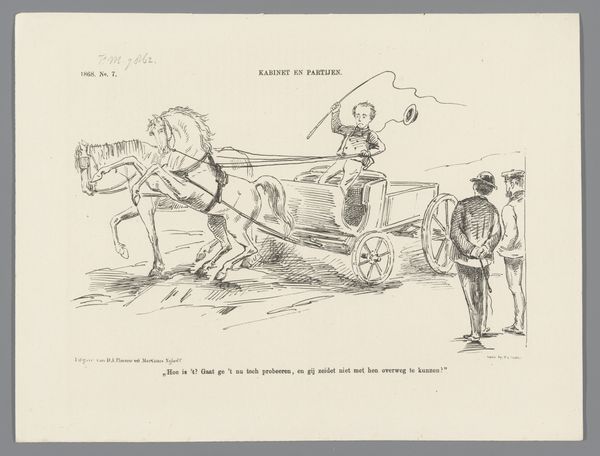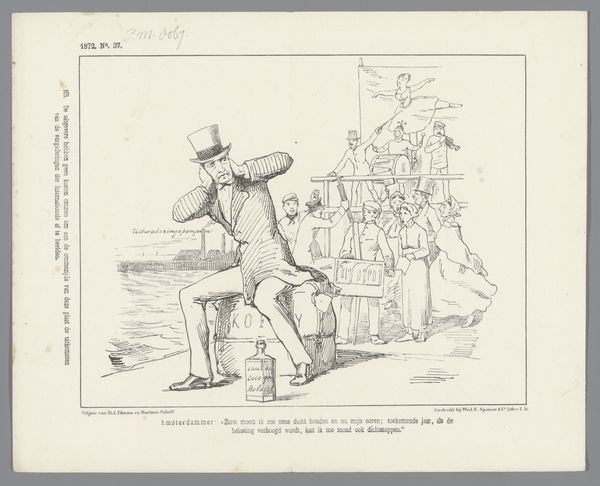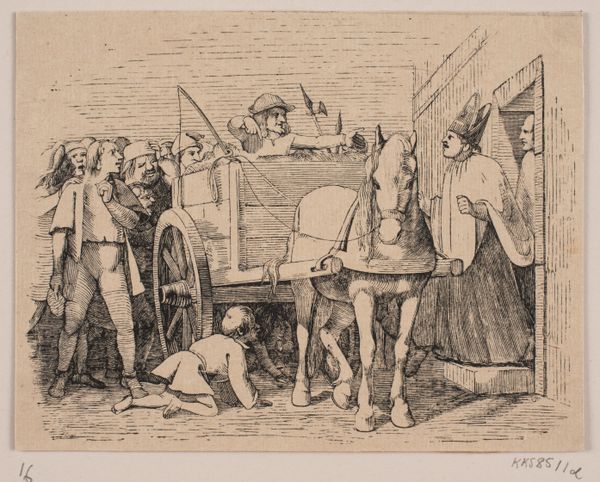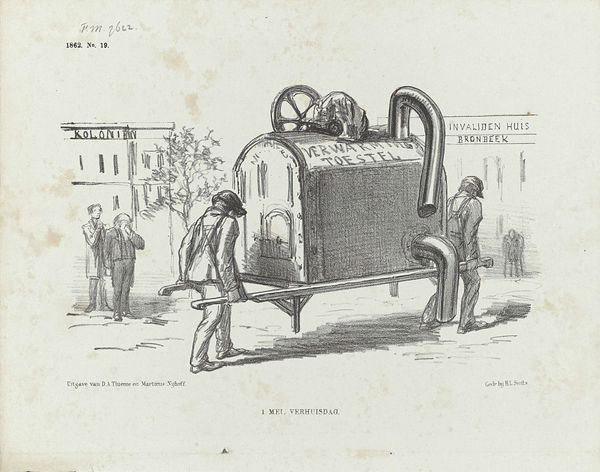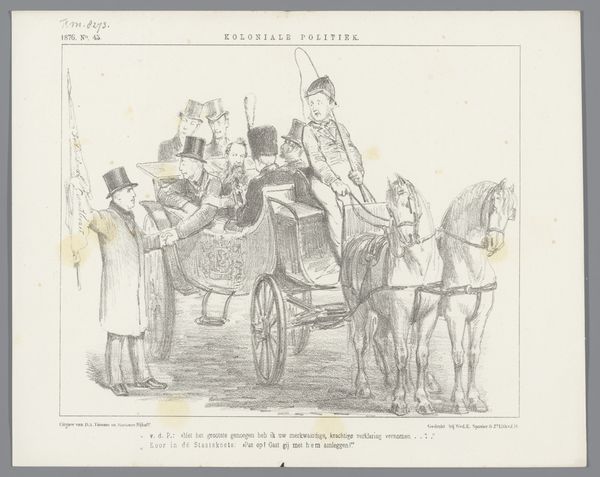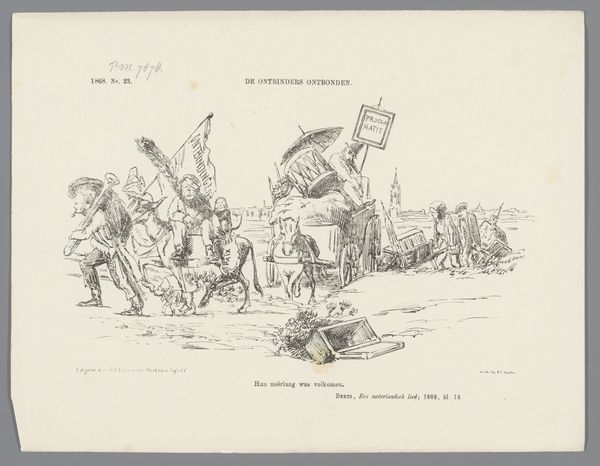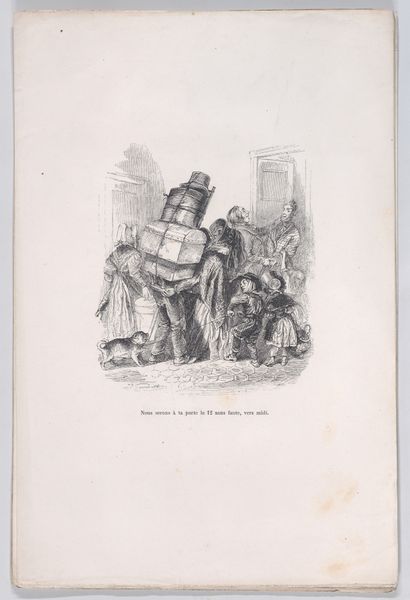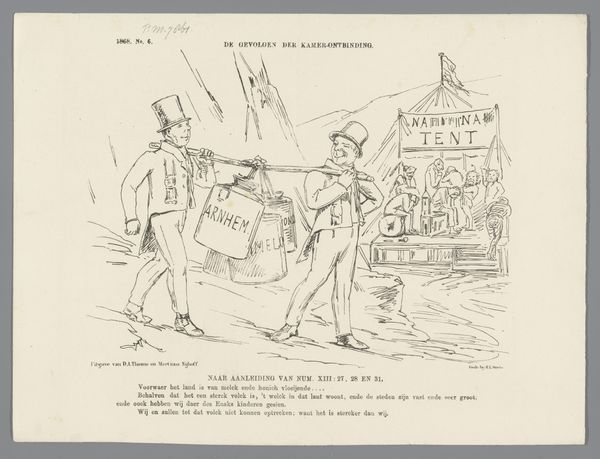
drawing, print, ink
#
drawing
#
narrative-art
# print
#
caricature
#
ink
#
cityscape
#
modernism
Dimensions: height 215 mm, width 275 mm
Copyright: Rijks Museum: Open Domain
Editor: Here we have a drawing entitled "Politieke Spotprent, 1882" from Johan Michael Schmidt Crans, made using ink. It looks like a political cartoon, maybe commenting on the government, and I am intrigued by the presence of Dutch text in it. What’s your take on it? Curator: It’s interesting you see it that way. Indeed, "Politieke Spotprent" translates to 'Political Cartoon,' which gives us a good starting point. Considering it's from 1882, a time of burgeoning social movements and industrial unrest across Europe, we should investigate how this drawing reflects the political climate. What elements in the drawing make you think it comments on the government? Editor: Well, the words "STAATS KOETS," which I guess means 'state carriage,' seems important, especially with figures crowded around it. Also, the title "Algemeene Werkstaking" makes me feel like the cartoon comments on the sociopolitical movement occurring in Europe in the late 19th century. Is that a viable interpretation? Curator: Absolutely. The carriage symbolizes the government or state, and the crowd suggests public opinion or perhaps pressure. The mention of a "general strike," or "Algemeene Werkstaking", frames the artwork within labor disputes and power struggles. Knowing this, does the visual of everything, the "alles," going away strike you as an appeal for a return to the previous conditions or an argument against the current status quo? Editor: It's hard to say definitively, but with the phrase implying the state carriage might lead to negative situations "maar bet is er ook naar", makes me believe this is not an endorsement. I now feel like Crans wanted to paint a nuanced commentary of the political issues. Curator: Exactly! The ambiguity is vital. It encourages viewers to contemplate the consequences of actions taken by the "State Carriage" amidst labor movements. And it is here where political cartoons fulfill their civic role: opening public discourse around political actions. Editor: This gave me more insights on how artists participate in the shaping of culture. Curator: And it’s also about how viewers, like us, engage with these historical dialogues.
Comments
No comments
Be the first to comment and join the conversation on the ultimate creative platform.

